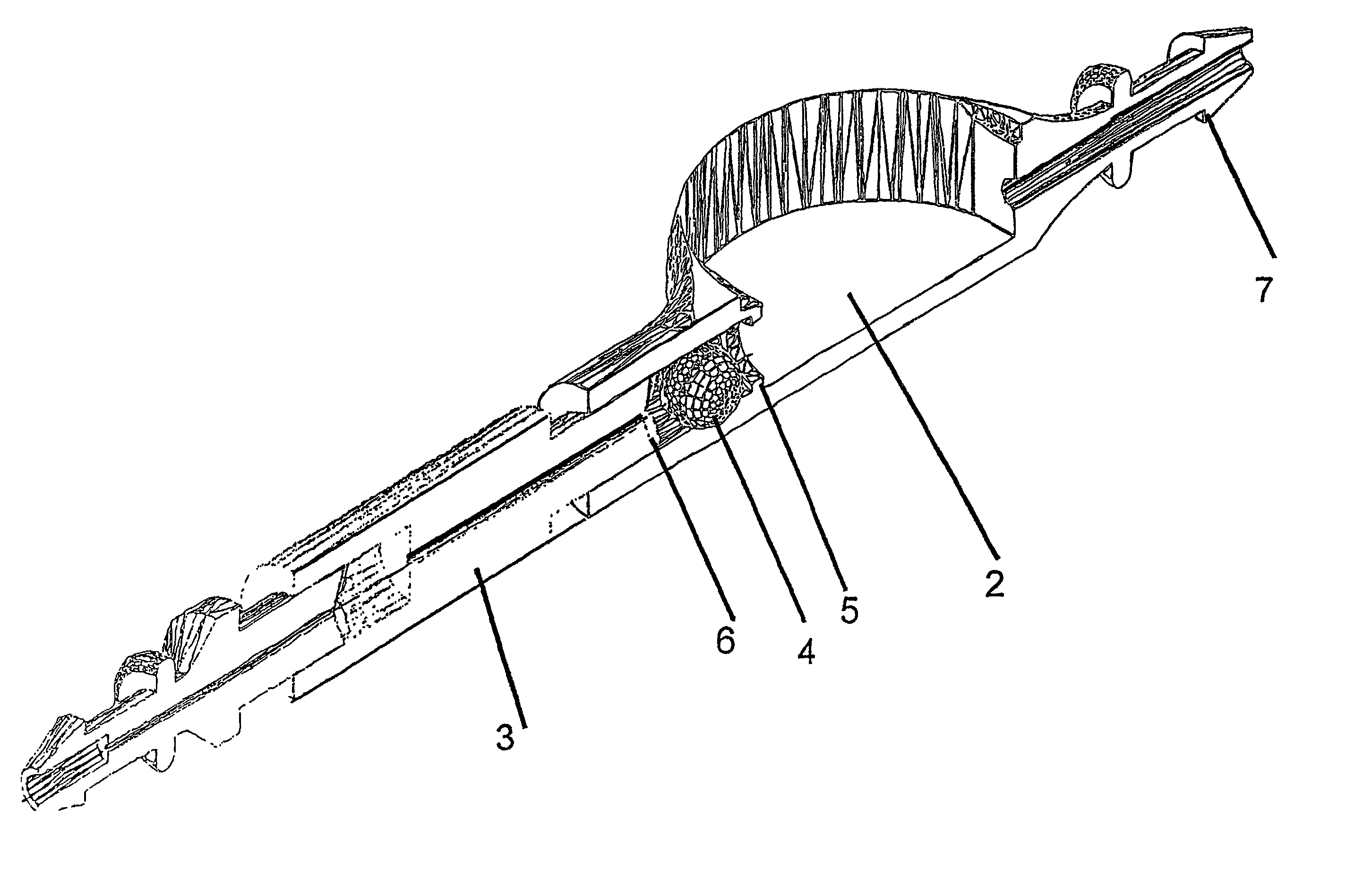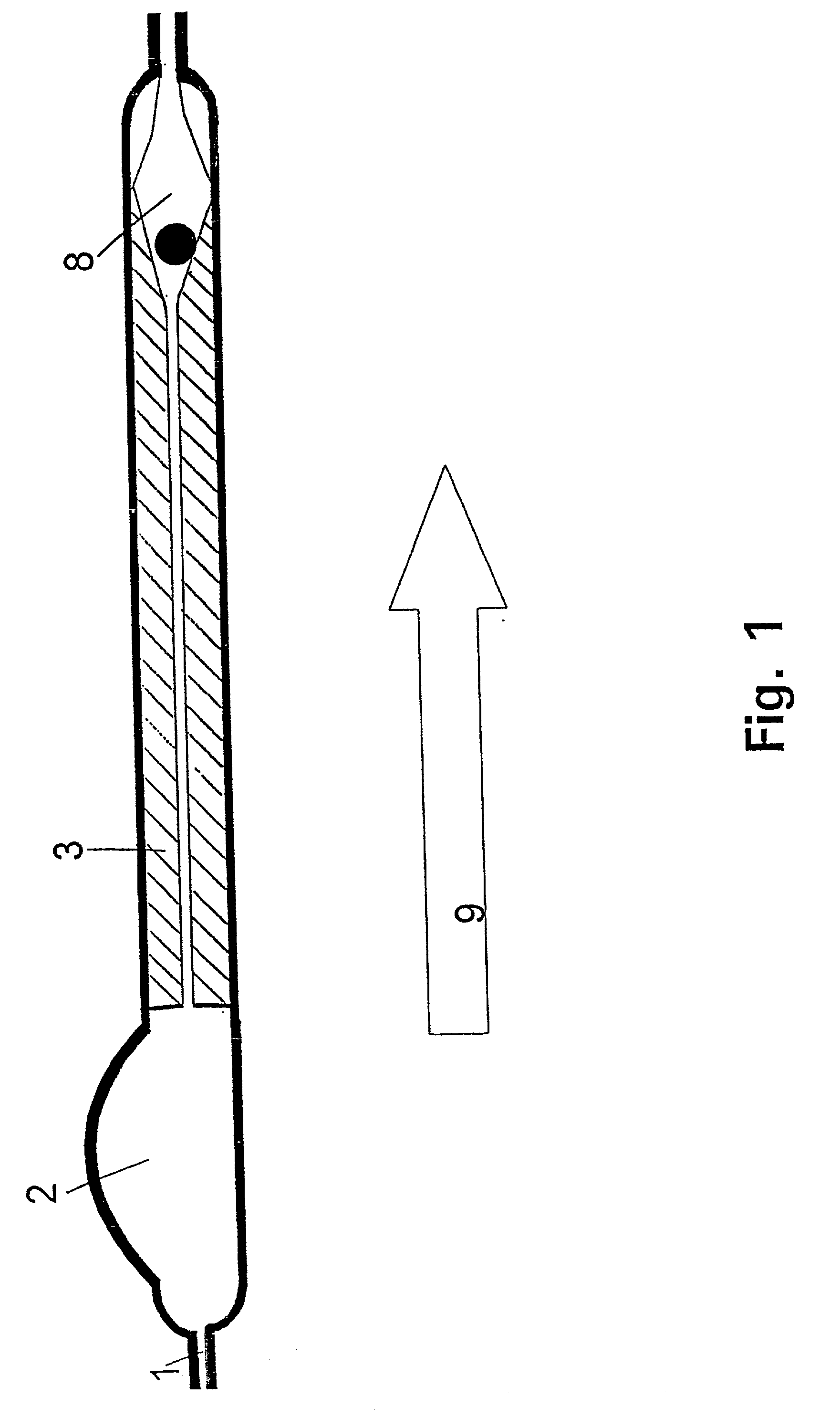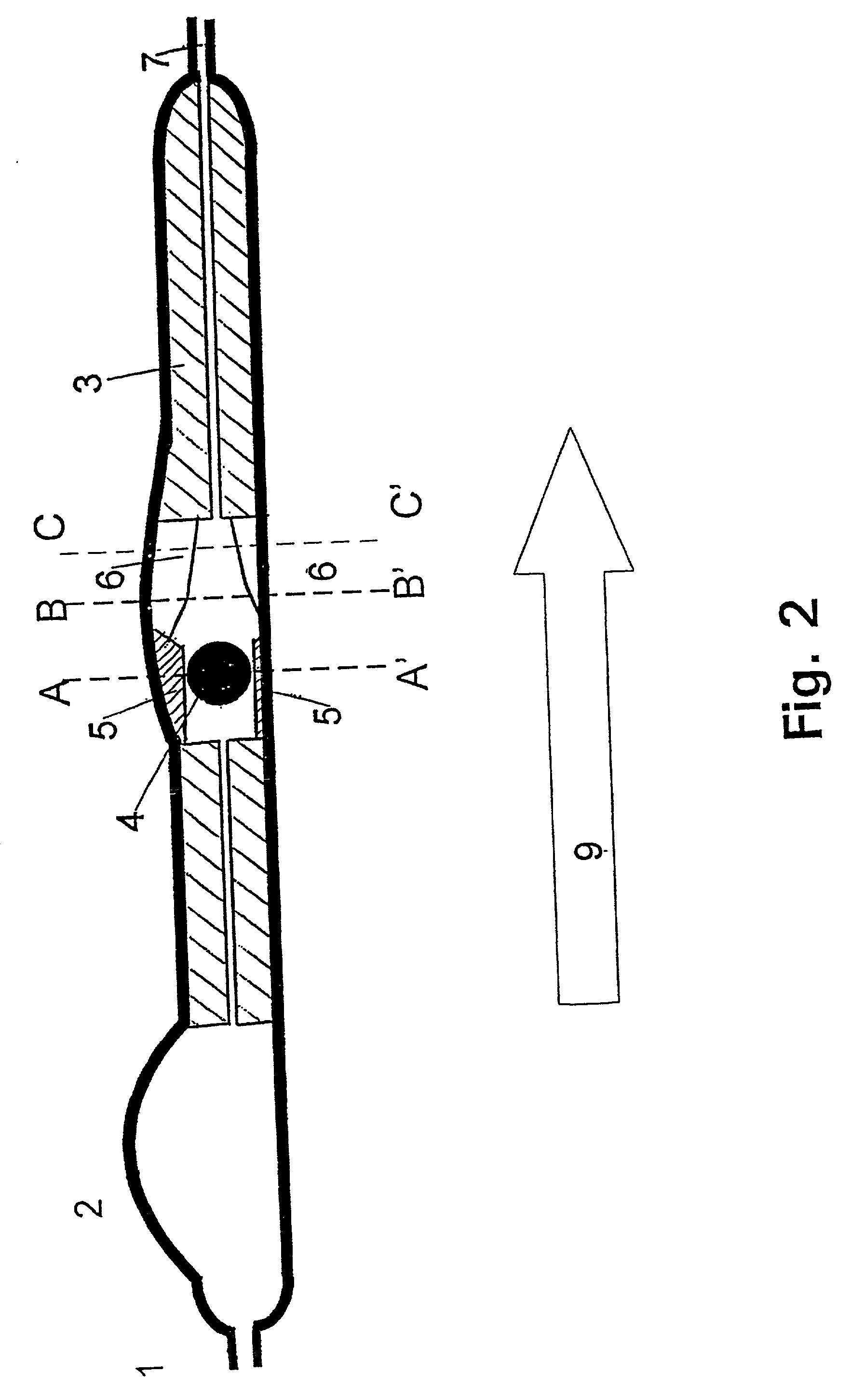Device for the treatment of hydrocephalus
a hydrocephalus and device technology, applied in the direction of suction devices, intravenous devices, wound drains, etc., can solve the problems of ventricular wall collapse, excessive csf drainage, and unsatisfactory shunting principl
- Summary
- Abstract
- Description
- Claims
- Application Information
AI Technical Summary
Problems solved by technology
Method used
Image
Examples
Embodiment Construction
[0025] In normal conditions the CSF is produced in the chorioid plexus in the ventricles. It flows through the ventricles, aqueduct and basal cisterns over the cerebral surface to the arachnoid villi, from where the CSF is absorbed into the sagittal sinus.
[0026] From measurements in 333 patients (B.o slashed.rgesen and Gjerris 1987) and 52 normal humans (Albeck, B.o slashed.rgesen et al. (submitted for publication)) it has been possible to establish the relationship between CSF production rate (FR), intracranial pressure (ICP), pressure in the sagittal sinus (Pss) and the resistance to outflow of CSF (Rout):
ICP=FR*Rout+P.sub.SS
[0027] The relation between the intracranial pressure and the formation rate is linear, and the production rate measured was found to be 0.3 ml / min. (B.o slashed.rgesen and Gjerris 1989).
[0028] The detailed knowledge on CSF-dynamics, obtained in the laboratories at the Department of Neurosurgery, Rigshospitalet, Copenhagen, Denmark, has provided the necessary ...
PUM
 Login to View More
Login to View More Abstract
Description
Claims
Application Information
 Login to View More
Login to View More - R&D
- Intellectual Property
- Life Sciences
- Materials
- Tech Scout
- Unparalleled Data Quality
- Higher Quality Content
- 60% Fewer Hallucinations
Browse by: Latest US Patents, China's latest patents, Technical Efficacy Thesaurus, Application Domain, Technology Topic, Popular Technical Reports.
© 2025 PatSnap. All rights reserved.Legal|Privacy policy|Modern Slavery Act Transparency Statement|Sitemap|About US| Contact US: help@patsnap.com



